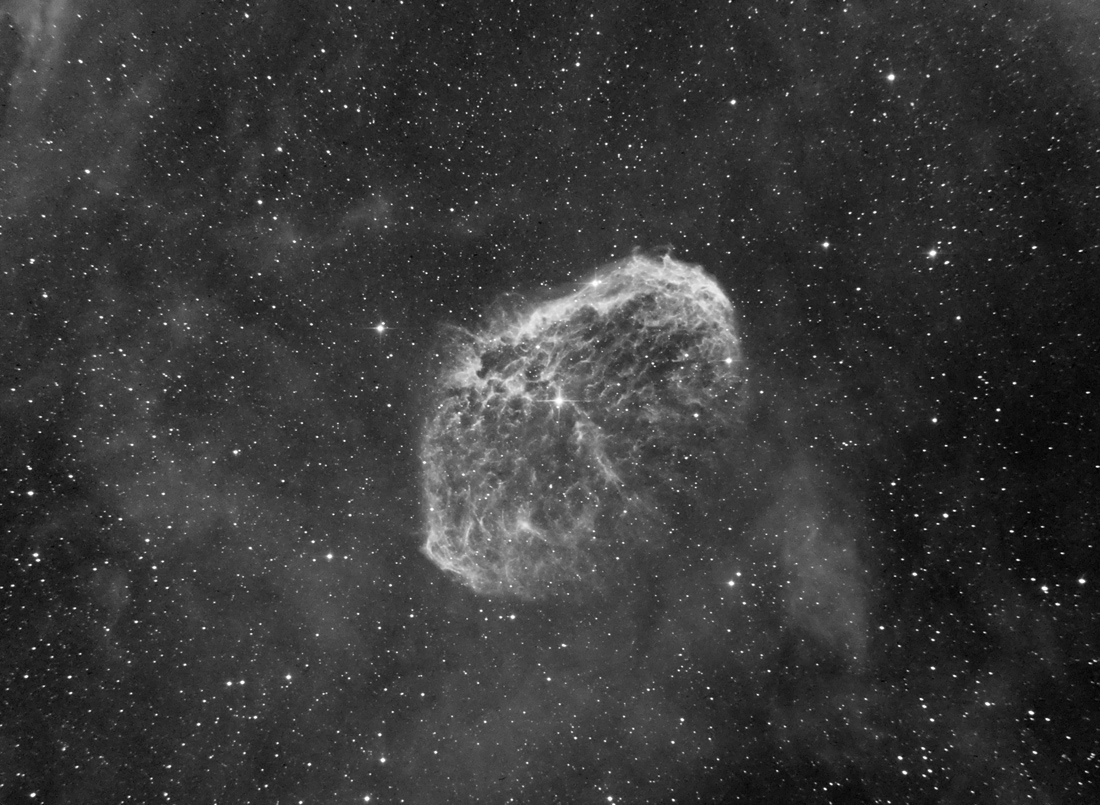 |
NGC 6888 - The Crescent Nebula in Hydrogen-Alpha light
 |
Copyright 2009 Hap Griffin
Powerful radiation winds blowing from the massive star, HD 192163 in the center of this photograph, created this nebula. About 400,000 years ago, HD 192163 expanded enormously to become a red giant and ejected its outer layers. 200,000 years later, the intense radiation from the exposed hot, inner layer of the star began pushing gas away at speeds in excess of 3 million miles per hour. Information gathered by the Chandra X-Ray satellite leads researchers to predict that HD 192163 will explode as a supernova in approximately 100,000 years.
NGC 6888 lies at a
distance of 5000 light-years.
This image was captured through a narrowband filter admitting only a narrow
slice of spectrum around the wavelength of glowing hydrogen. Thus it is a
monochrome (single color) image displayed as shades of grey.
Date/Location:
September 11, 2009 Griffin/Hunter
Observatory Bethune, SC
Camera: QSI 583wsg
Filters: Astrodon E Series Generation 2 HA (5nm BW)
CCD Temperature: -10 C
Instrument: Orion 10" Newtonian w/Baader MPCC
Focal Ratio: f/4.7
Mount: AP-1200
Guiding: Auto through Takahashi FSQ-106N w/ SBIG ST-402
Conditions: Clear for early Fall
Weather: 65 F, still
Exposure: 100 minutes total (5 x 20 min)
Capture: ImagesPlus v3.80B Camera Control
Processing: Frame calibrations, alignment, Digital Development with ImagesPlus v3.80.
Finishing in Photoshop CS4.